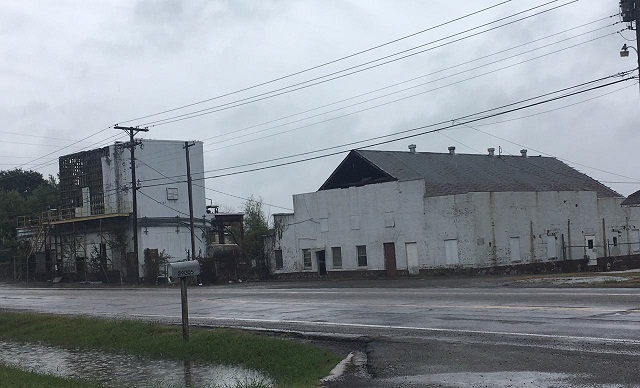
BLOOMER CHICKEN PLANT


Written by Jack James for the paper "Resident Press" in 2018
BLOOMER CHICKEN PLANT
The township of Bloomer is the last spot in the road in Sebastian County as you take Highway 22 to the east. Today, it is little more
than simple houses and a gas station/convenience store. But in the center of this little spot in the road you will find the crumbling
remains of what was once a major employer in the entire area of northeast Sebastian County.
The Bloomer Chicken Plant was built in 1936 by the Orsburn family and employed about 75 people. Shirley Orsburn Stubblefield, in a 1957
interview, said that part of the plant had been the A.T. Crouch Creamery and that her father, H. M. Orsburn, Sr., was the manager there
before he bought the building. The plant went through several owners through the years. It started out as Oz-Ark-Val under the Orsburn family.
In 1965 it was leased by Swift and then Val mac-Tasty Bird in 1977. Finally, Tyson purchased the business in 1984. Tyson ran the plant until
1998 when it announced the laying-hen-processing plant in Bloomer, because the company chooses not to make plant repairs deemed necessary by
management and the U.S. Department of Agriculture. Tyson said that the plant would need to be completely remodeled if they kept it open and
that "they couldn't afford it."
The Bloomer Chicken Plant was geared to process 1,500 broilers per hour in 1998. When Tyson announced on May 11 that the plant was closing
that year, they were running almost a quarter million chickens per week. The plant employed 176 people.
The chicken plant was a major employer in the eastern Sebastian County area. When the plant closed, many couldn't find work or afford to drive
to Fort Smith for minimum wage pay of $2 per hour. There were a lot of folks who expected the plant to be purchased or reopened by Tyson, but
it never was to be.
The building sits in disrepair, disintegrating little-by-little in the elements. Today it only serves as a reminder of memories of the people
in and surrounding Bloomer of what was once their livelihood.